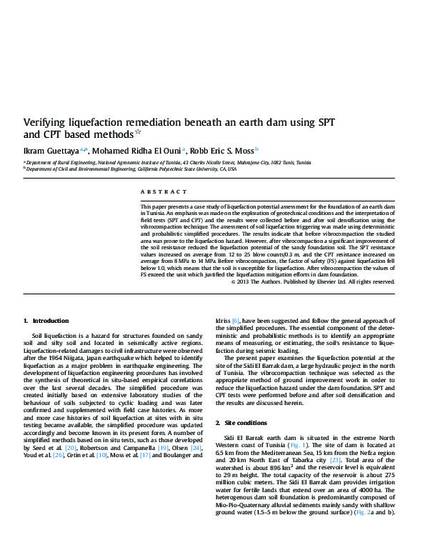
This paper presents a case study of liquefaction potential assessment for the foundation of an earth dam in Tunisia. An emphasis was made on the exploration of geotechnical conditions and the interpretation of field tests (SPT and CPT) and the results were collected before and after soil densification using the vibrocompaction technique. The assessment of soil liquefaction triggering was made using deterministic and probabilistic simplified procedures. The results indicate that before vibrocompaction the studied area was prone to the liquefaction hazard. However, after vibrocompaction a significant improvement of the soil resistance reduced the liquefaction potential of the sandy foundation soil. The SPT resistance values increased on average from 12 to 25 blow counts/0.3 m, and the CPT resistance increased on average from 8 MPa to 14 MPa. Before vibrocompaction, the factor of safety (FS) against liquefaction fell below 1.0, which means that the soil is susceptible for liquefaction. After vibrocompaction the values of FS exceed the unit which justified the liquefaction mitigation efforts in dam foundation.
Available at: http://works.bepress.com/rmoss/42/
